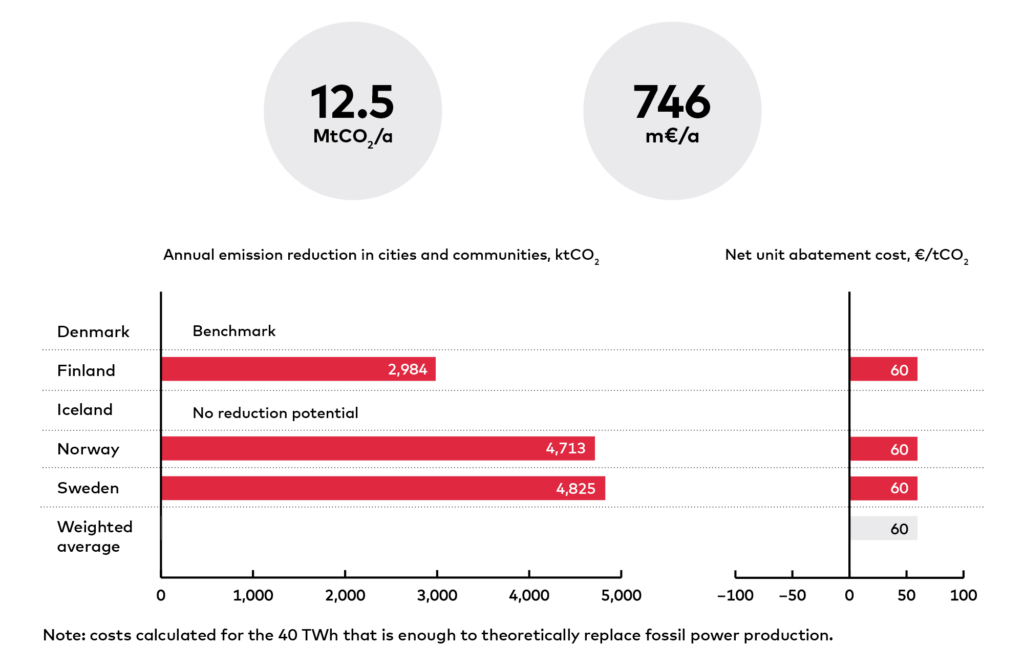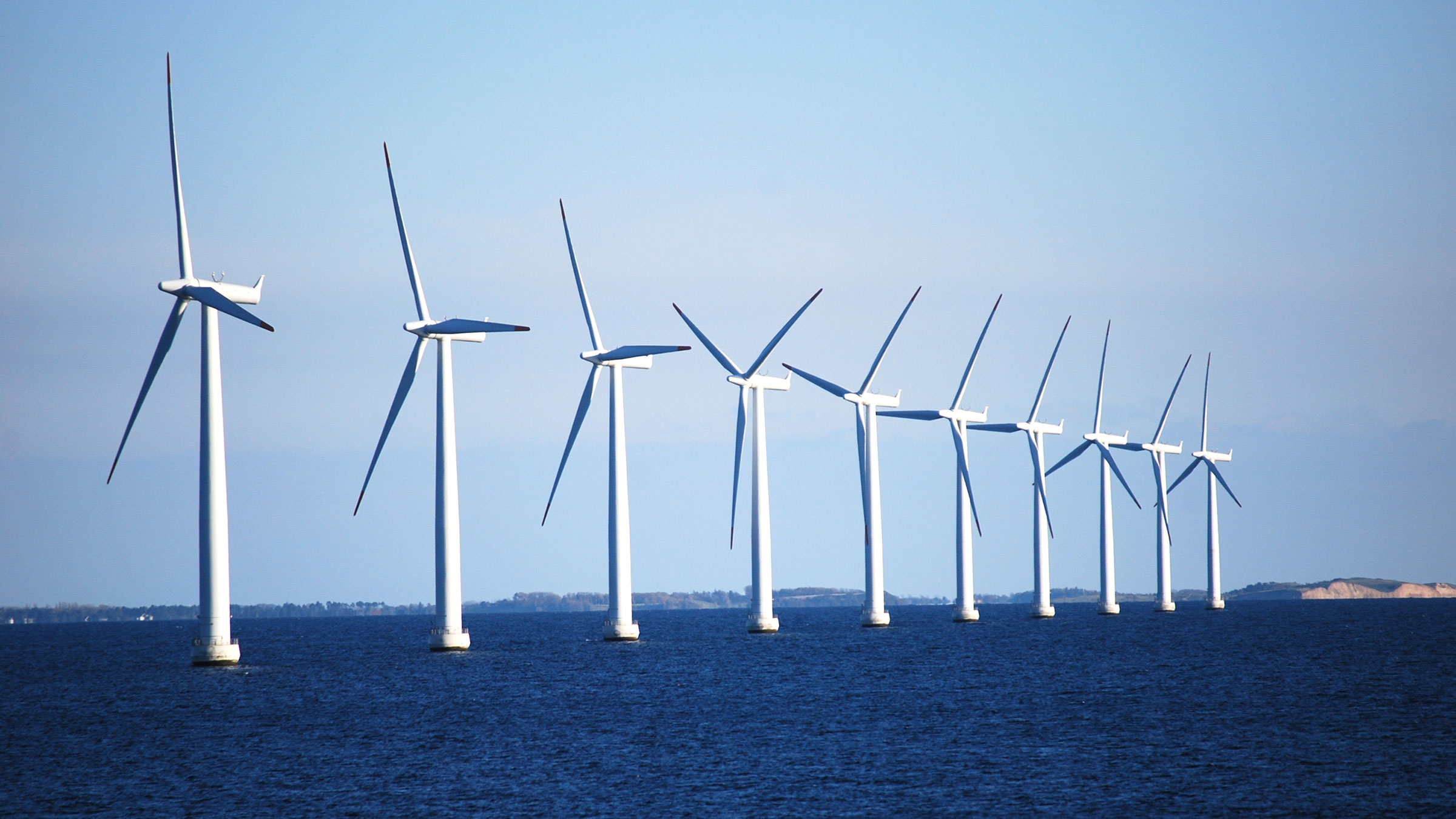Climate impact
In the 1990s, the Danish Action Plan for Offshore Wind identified Middelgrunden, a natural reef 3.5 kilometres outside Copenhagen harbour, as a potential site for offshore wind and Copenhagen took the initiative to set up a wind farm. A co-operative with local people was formed and co-operation with the local municipality-owned utility established. In 2000, after an extensive public hearing and dialogue phase, they built a 40 MW wind park of 20 turbines, which at the time was the world’s largest offshore wind park and produces annually around 100 GWh of electricity. Half of Middelgrunden is owned by the co-operative of over 8,500 members, mostly locals.
Nordic seaside municipalities have large potential to utilise offshore wind. If other Nordic municipalities increased their offshore wind production to match the total level of Denmark and produced 13% of their current electricity demand of their country with offshore wind, production would be increased by 46 TWh. However, theoretically only 40 TWh is needed push out all remaining fossil-based power generation from the joint electricity network between Finland, Sweden, Norway and Denmark. This would reduce emissions by 12.5 MtCO2. (This is a monthly calculation – see the report for more details.)
Costs and savings
Offshore wind is currently significantly more expensive than onshore wind due to higher construction, grid connection and operation and maintenance costs, but the cost has been declining rapidly as the turbines grow in size. We estimate the abatement cost to be 60 €/tCO2 when calculated for the addition of 40 TWh.

Other benefits
Wind power cuts harmful air pollution from fuel combustion, reduces reliance on fuel imports and can create local jobs. Compared to onshore, offshore wind produces power in greater quantities and more steadily, which reduces the required flexibility from the rest of the electricity system and thereby system cost.
Offshore wind is often built far away from land, which reduces visual disturbance, noise and, consequently, public resistance.
Barriers
- Offshore wind is still significantly more expensive than onshore wind, which means installations require some kind of public support.
- Offshore wind power projects near the shore often face resistance by some of the local people.
- Resistance can be alleviated by increasing the distance from the shore, but the costs increase with the distance and the depth of water. Lengthy and rigid permit-granting processes can also act as a significant barrier.
- The existing power grids limit the placement of wind parks, as too great a distance to the existing transmission grid can make the connection too expensive.
- Disturbance to radar equipment can severely limit the placement of wind parks.
- Wind requires flexibility from the rest of the energy system in the form of transmission capacity, demand response, storage, increased peak backup power or interconnections with neighbouring countries.
Enablers
- Financial support is needed to get offshore wind parks built. Denmark has auctioned energy production support for offshore farms. Until recently the grid connection of offshore wind was also publicly financed.
- Development of technology lowers the costs. Floating offshore wind power is under development in for example Norway – this will enable the placement of wind farms more freely.
- Local public acceptance is necessary. To drive this, Denmark has promoted public dialogue and co-operatives that enable locals to buy shares in the wind farms.
- Streamlined and standardised application processes that allow for technological advances during the permitting process. In Denmark, wind projects also receive support during the pre-investment phase and the permitting process is coordinated by one authority.
- Energy system with a lot of flexibility will allow for high shares of wind power. In Denmark, this is achieved through the placement of wind farms in different regions, high flexibility by the country’s power and CHP plants and strong interconnections with neighbouring countries.
































RELATED SOLUTIONS